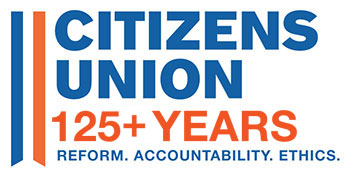Originally Published: October 30, 2010
Troubleshooting Guide to Take Into the Polls And Solve Common Problems That Arose During the Primary
New York- With new voting systems in place for Tuesday’s election following a troubling debut during the primary election, a coalition of the city’s leading civics groups released a list of their Top Five Tips for Voters in addition to a troubleshooting guide that tells voters specifically what to do to avoid or overcome problems that occurred during the Primary Election in September. Voters can take this one-page guide into the polls with them, and use it to address issues that may arise.
Tuesday’s election will be the first time that optical scan voting systems will be used citywide in a General Election. The changeover has been complicated by decisions by the State and New York City Board of Elections that advocates warn may end up disenfranchising voters. A seemingly unending string of electoral problems and revelations has left voters confused and concerned as to whether their votes will count on election day. Amidst this backdrop, civic groups are seeking to reassure New Yorkers going to the polls through the release of their Top Five Tips for Voters:
Top Five Tips for Voters
- Don’t try to cross out or erase any mistakes you might make on your paper ballot, request a new ballot instead;
- All poll sites will also have ballot marking devices – terminals that can help guide voters needing assistance, or voters in general, through the ballot and offer numerous accessibility features;
- Remember to turn the ballot to the back side if you want to vote on the two questions proposed by the city’s charter revision commission, including one on term limits and the other on elections and government administration;
- When the poll worker gives you your paper ballot, don’t forget to ask for your privacy sleeve/folder to help hide your choices from public view; and
- If you insert your ballot into a scanner and get an error message, beware of pressing the green “Cast” button. It will cast your vote without giving you the chance to have your ballot returned to correct.
In addition to these general tips for voters, the groups compiled a one-page guide that voters can take with them when they go to vote, and reference to avoid problems that occurred on primary day and fix those problems should they happen again.
“Preparation is the key for adjusting to the new voting system,” said Susan Lerner, Executive Director of Common Cause. “Voters should consult the Board’s website that has a video demonstrating the new process and get a sense of which candidates are on the ballot by doing some research before they go to the polls. Voters can learn where their poll site is on the Board’s website at http://gis.nyc.gov/vote/ps/index.htm”
“If you’re not on the voter rolls at your poll site, don’t give up on casting your vote,” added Neal Rosenstein of NYPIRG. “First, make sure you’re at the right poll site for your election and assembly district. If that doesn’t solve the issue, ask for an affidavit ballot. This will allow you to cast a vote. Your registration will be checked later, and if you are registered, your vote will count.”
“If you have trouble reading or marking a paper ballot tell a poll worker you’d like to use a Ballot Marking Device (BMD),” noted Rima McCoy, Voting Rights Coordinator at CIDNY. “The BMD has audio for voters who are blind, hand-held controls or a sip and puff switch for voters with physical disabilities, and increased print size and contrast for voters with low vision. You can also use the BMD to view the ballot in other languages in large print.”
“When you cast your vote, make sure you remember to vote on the charter revision commission questions on the back of the ballot related to term limits and electoral and government administration,” advised Alex Camarda, Director of Public Policy & Advocacy at Citizens Union. “These are important questions related to our city’s structure and function, and should not be overlooked by voters.”
“Make sure you don’t overvote by casting more votes for a particular race than is needed,” recommended Larry Norden, Senior Counsel at the Brennan Center. “If you do overvote, the scanner will alert you but don’t be confused by its unclear messaging. Press the red button to get your ballot back. Get an entirely new ballot so your vote counts in every race.”
“Ensure your vote remains private by asking for a privacy sleeve,” suggested Marjorie Shea of the Women’s City Club. “This folder for your ballot will ensure that nobody in the poll site sees your marked ballot while you walk with it from the privacy booth to feed the ballot into the scanner.”
“If the scanner should break down, ensure your vote counts by using a different scanner at the poll site,” said Katie Doran of the League of Women Voters. “If all the scanners break down, you can still cast your vote as long as there are paper ballots and a voter registration book at the poll site. Just mark your paper ballot and give it to a poll worker for safekeeping until scanners are up and running again. The ballots will be placed in a secure receptacle that is part of the scanner and scanned in when the equipment is working again”
By following these useful tips and troubleshooting guide, civic groups believe voters can be assured that their voting experience will go smoothly and most importantly, their votes will count on election day.
Download as a PDF: [bsk-pdf-manager-pdf id=”63″]
